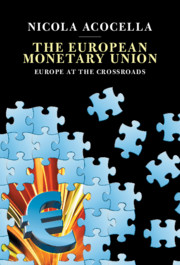Book contents
- The European Monetary Union
- The European Monetary Union
- Copyright page
- Dedication
- Contents
- Figures
- Tables
- Preface
- Acknowledgments
- Abbreviations
- Part I The Historical and Institutional Background
- 1 The Preparation of the European Economic and Monetary Union
- 2 The Institutions of the European Economic and Monetary Union
- 3 Theoretical Foundations and Practical Interests behind European Institutions
- Part II Institutions and Policies in Action
- Part III Lines of Reform of EMU Institutions
- References
- Index
3 - Theoretical Foundations and Practical Interests behind European Institutions
from Part I - The Historical and Institutional Background
Published online by Cambridge University Press: 19 August 2020
- The European Monetary Union
- The European Monetary Union
- Copyright page
- Dedication
- Contents
- Figures
- Tables
- Preface
- Acknowledgments
- Abbreviations
- Part I The Historical and Institutional Background
- 1 The Preparation of the European Economic and Monetary Union
- 2 The Institutions of the European Economic and Monetary Union
- 3 Theoretical Foundations and Practical Interests behind European Institutions
- Part II Institutions and Policies in Action
- Part III Lines of Reform of EMU Institutions
- References
- Index
Summary
In Chapter 3 we sketch the roots of the EMU institutions in terms of the theories and the interests shaping them. This makes it easier to understand in Part II the imbalances that arose in the Union, largely descending from the free trade orientation of its institutions as well as from the different interests of countries and sections of the population. The monetarist and New Classical Macroeconomics theories, popular at the time when the institutions of the EMU were devised, played an important role for the choice of the institutional design. However, the existing theories were only partly implemented (e.g., the requirements of the Optimal Currency Theory were not satisfied) and later revisions of the accepted theories – asking for a different orientation of the initial institutions and current policies – have been ignored. Other factors, of the nature of vested interests, at the roots of the different growth models pursued by the various countries, added to existing theories and can explain together with them both the institutional design and the policies implemented by the Union.
Keywords
- Type
- Chapter
- Information
- The European Monetary UnionEurope at the Crossroads, pp. 68 - 102Publisher: Cambridge University PressPrint publication year: 2020

